
 |
|
|
Corn
Volume 63 Number 18 Date 11/15/2018 EUROPEAN CORN BORER - Larval counts in September and October were the lowest in 77 years of annual surveys. The 2018 state average ECB population decreased to 0.01 borer per plant or 1 larva per 100 plants, falling below the previous record of 0.02 borer per plant set in 2015. Seven of the state's nine agricultural districts showed averages less than or equal to 2017 levels, while negligible increases were noted in the west-central and northeast areas. Larvae were found in only 10% of the fields, with infestation rates below 36% at all but one Dunn County site which averaged 108%. The exceptionally low ECB pressure documented by the fall survey should provide reassurance to growers who planted non-trait corn seed in 2018, though conventional acreage will continue to require a higher level of scouting and management to address local variability in seasonal ECB abundance. TRUE ARMYWORM - Conditions favored mid-season armyworm populations and outbreaks developed in July in scattered areas of the state. Reports of severe infestations in barley, corn, oats, peas, and wheat were received from several counties, including Clark, Columbia, Eau Claire, Marquette, La Crosse, Rusk, Taylor and Vernon, with a few accounts of masses of caterpillars migrating across roadways. The armyworm outbreak subsided by late July due to pupation of second-generation larvae and insecticide treatment of many acres of cropland. CORN EARWORM - The DATCP network of 14 pheromone traps captured a cumulative total of 7,905 moths, with the majority arriving during the six-week period from August 2-September 12. More than one-quarter of the migrants (2,269) were collected at the Beaver Dam (Dodge County) location. Three other sites in Dane, Dodge and Fond du Lac counties also reported high cumulative counts of 500 or more moths. This year's total count was nearly three times larger than that of 2017 when 2,760 moths were captured in 15 traps. Corn earworm flights ended about September 26. CORN ROOTWORM - Beetle populations were historically low again this year. The 2018 state average count of 0.2 beetle per plant was equivalent to the 2017 average, while numbers in the state's nine crop reporting districts remained at or below 0.4 beetle per plant for the second year in a row. The only district-level increases in 2018 occurred in the west-central and northeast areas, where the averages rose from 0.2 beetle per plant in 2017 to 0.3 per plant and from 0.2 to 0.4 per plant, respectively. A minor decrease was recorded in the central district. Above-threshold counts of 0.75 or more beetles per plant were found in 21 of 229 (9% yellow circles) fields surveyed, low to moderate counts of 0.1-0.7 per plant were found in 81 fields (35% green circles), and no beetles were observed at 127 (56% gray circles) of the survey sites. Again this season the northern species outnumbered the western species by a 2:1 ratio. The 2018 total beetle count was 566, with 379 being the northern variety and 187 westerns. In 2017, a total of 347 northerns, 176 westerns, and 5 southerns were counted, 528 adult rootworms in all. WESTERN BEAN CUTWORM - Moth counts remained unusually low throughout the 2018 flight, a trend attributed to defective lures. In late July, the Pest Survey Program was notified by a consultant that his pheromone traps had collected substantially more moths than the DATCP traps. The lures used by the consultant and DATCP were produced by different manufacturers; DATCP's were found to have a lower pheromone load rate. In all, the 55 DATCP traps captured just 607 moths from June 20-August 23, while the consultant's 16 traps caught 2,344 moths. Pheromone load inconsistency is a common problem in lure manufacturing that likely influences lure attractiveness and reliability from one season to the next. Although WBCW counts can be beneficial in timing the start and peak of the moth flight, growers are reminded that WBCW trap numbers should not be interpreted as a predictor of field damage. BLACK CUTWORM - Larval feeding injury was encountered in unexpectedly few cornfields surveyed in spring of 2018, despite planting delays and large moth flights throughout May. The cumulative total count for the April 12-June 13 survey period was 2,217 moths in 47 traps, with an individual high of 291 moths near Waupun in Dodge County. In 2017, the survey captured 3,228 moths in 45 traps. Although this year's trap counts indicated a large and threatening spring moth migration, economic damage to emerging corn was uncommon. -- Krista Hamilton, DATCP Entomologist CORN TAR SPOT - This foliar disease reached epidemic levels in Wisconsin and the Midwest in 2018. Reported for the first time in the state in 2016, tar spot (Phyllachora maydis) appeared late in the season and was considered a mainly cosmetic problem. However, this year the disease developed earlier and was widespread. Damage varied from minor to severe, with many cases of early dry-down and complete death of fields reported. Tar spot was documented by the UW Field Crops Pathologist and DATCP in 33 southern Wisconsin counties in September and October. Nearly all (97%) of the 79 fields sampled by DATCP were infected. SOUTHERN CORN RUST - Southern corn rust (Puccinia polysora) was confirmed in the state this fall, at trace levels on three samples from fields in Sauk, Richland, and Walworth counties. This fungal disease occasionally develops before harvest in years when weather patterns are conducive for movement of rust spores into Wisconsin. As in the past, its arrival in 2018 was generally too late to cause yield losses. BACTERIAL LEAF STREAK - A corn leaf sample from Pierce County tested positive for Xanthomonas vasicola pv. vasculorum in August, representing a new state record. The sample was collected by UW Field Crops Pathologist Damon Smith on August 7 and confirmed by the UW Plant Disease Diagnostic Clinic on August 23, with verification by an authorized USDA identifier on September 6. Although a pathogen of concern, this organism is not a quarantine pest. -- Anette Phibbs, DATCP Plant Pathologist 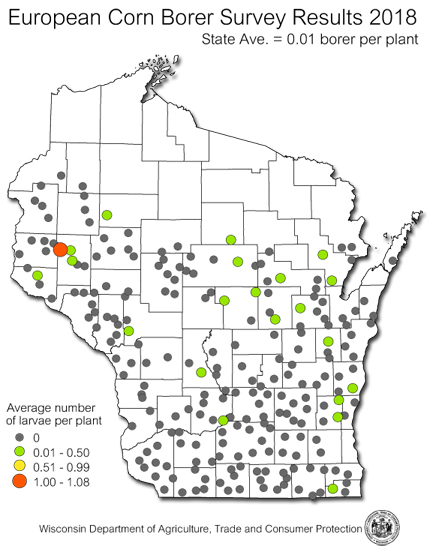
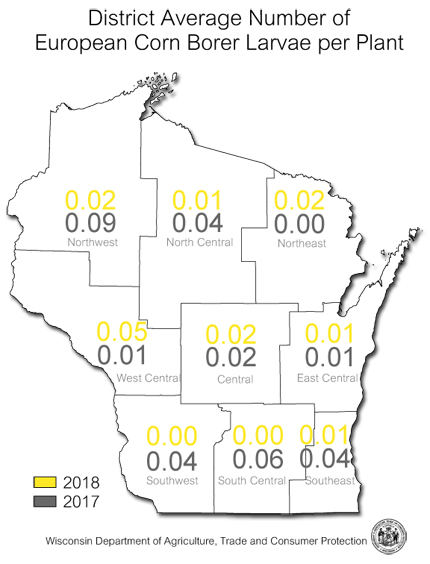
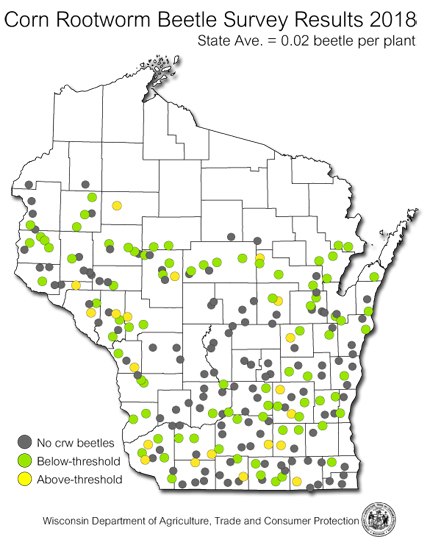
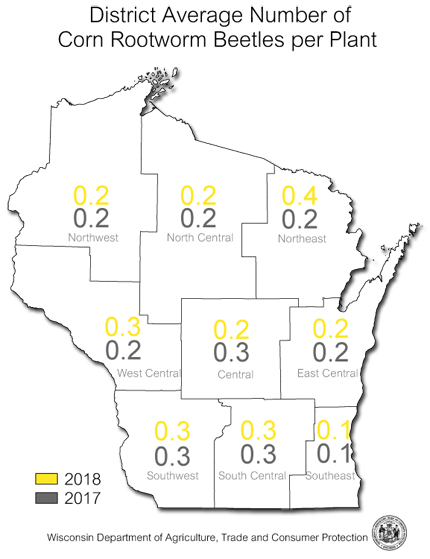
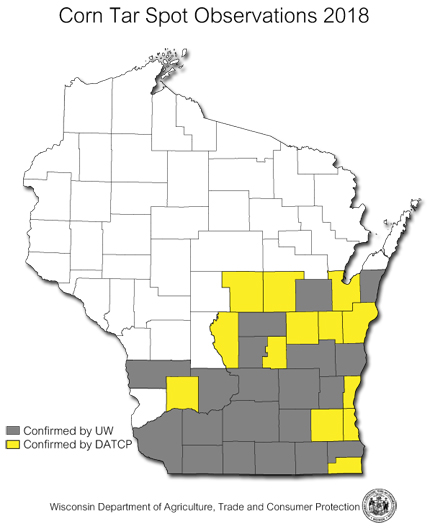
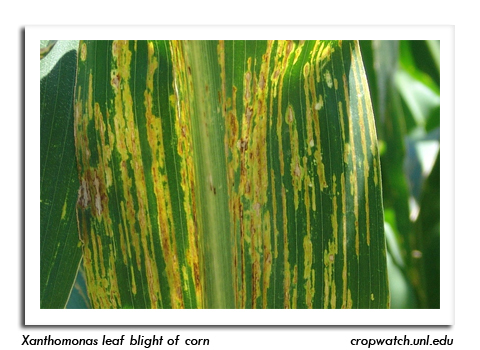
|
|
|